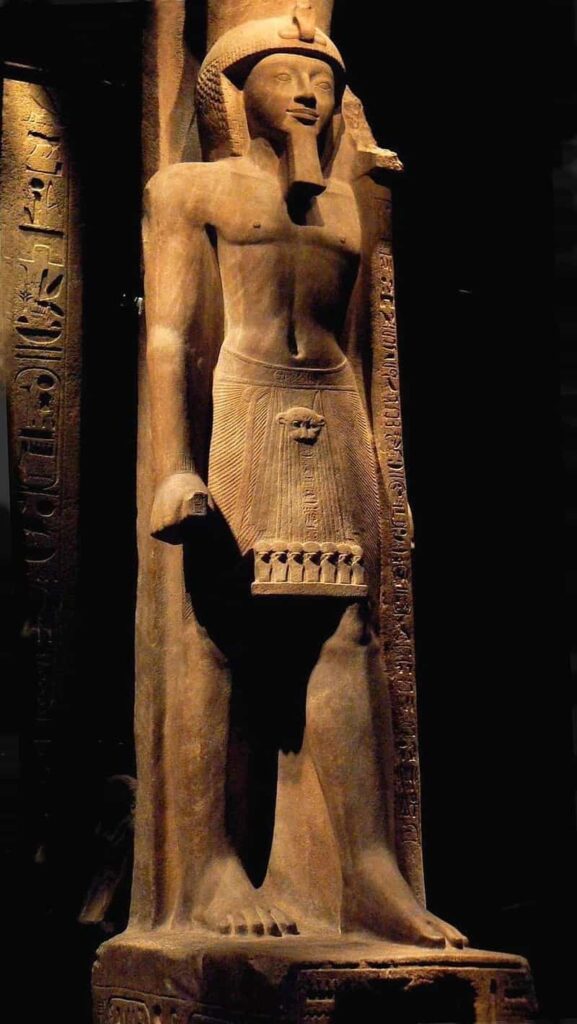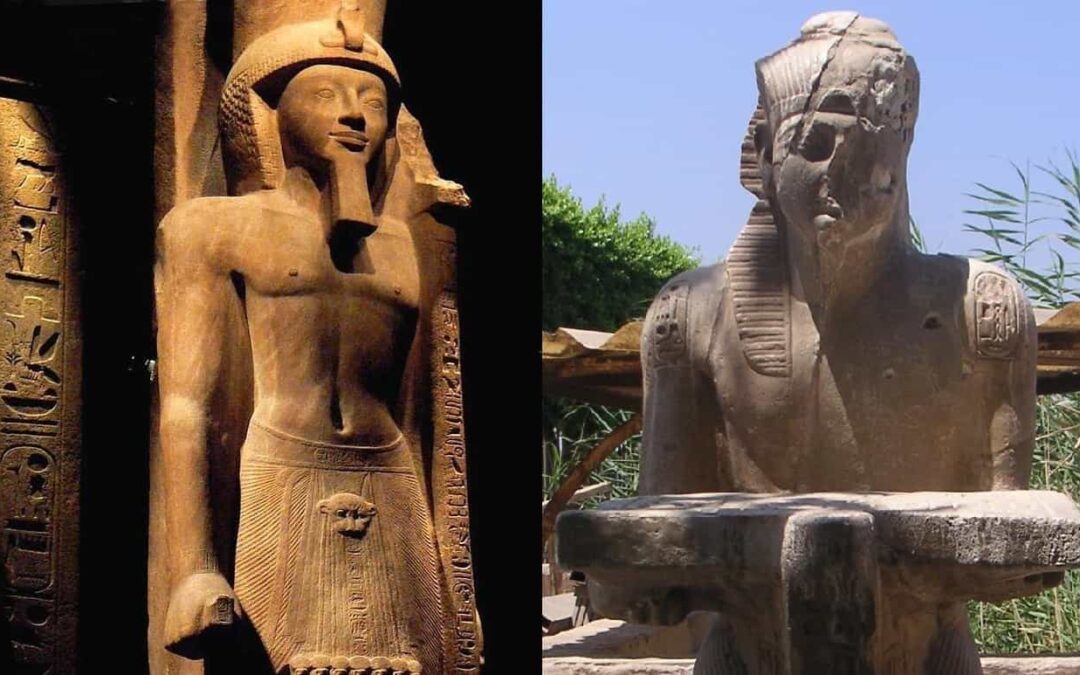Seti II (or Sethos II) was a pharaoh of the 19th dynasty in ancient Egypt. He ruled from 1203–1197 BC, with his birth name being Sethy Merneptah “Lord of Seth, beloved of Ptah,” and the coronation name Userkheperure Setepenre “Mighty are the manifestations of Ra, chosen of Ra.”
Biography
He was the son of Pharaoh Merneptah and the Great Royal Wife Isetnofret (Isis-nofret). When his father passed away, Seti II must have been of mature age. During the succession, ancient Egypt faced a precarious situation with well-protected borders but significant internal instability, providing an opportunity for a coup d’état that prevented Seti II, the rightful heir, from assuming the throne.
It remains unknown who orchestrated this political maneuver. Prince Amenmesse, potentially Seti II’s half-brother, ascended as pharaoh and severed ties with the royal family residing in Pi-Ramesses. He seized control of Thebes and Nubia in Upper Egypt during Seti II’s second to fourth regnal years.
The involvement of the priests of Amun is plausible, as Amenmeses secluded himself in Thebes, directing his actions primarily in the southern region of the country, distancing himself from the north.
Meanwhile, Seti II had to await his opportunity at the court of Pi-Ramesses, unable to retaliate against the usurper. Though a civil war might have been possible, historical records lack evidence, suggesting it likely didn’t occur due to the balanced and weakened state of both sides. A warlike action might have triggered a foreign invasion.
Therefore, in those uncertain times, with limited available data, the legitimate king seemed content with his northern dominions while plotting a conspiracy against Amenmeses.
Amenmeses’ reign was brief; he ruled for barely three years before Seti II assumed absolute power over the entire country. Seti II then dedicated himself to erasing the memory of the usurper.
Throughout his six-year reign, Seti II was consistently accompanied by excellent collaborators and influential advisors, notably Chancellor Bay and the prominent figure of the great royal wife herself, Queen Twosret.
These two individuals, pivotal in shaping the fate of the 19th Dynasty, were the primary supporters of the monarch and held significant influence over the governance of the country.
Upon Seti II’s death, likely due to age-related causes, he was succeeded by the young Siptah, potentially the son of either Seti II or Amenmesse. This transition provided a perfect opportunity for Bay and Twosret to assume the regency, solidifying their power.
The dynasty, which began auspiciously with Seti I and reached its pinnacle during the early years of Ramses II, was rapidly deteriorating.
Seti II was interred in a tomb in the Valley of the Kings, designated as KV15 following tradition. However, his mummy was safeguarded from tomb raiders during the 21st Dynasty, hidden within the cache of the tomb of Amenhotep II (KV35). It was discovered towards the end of the 19th century.








